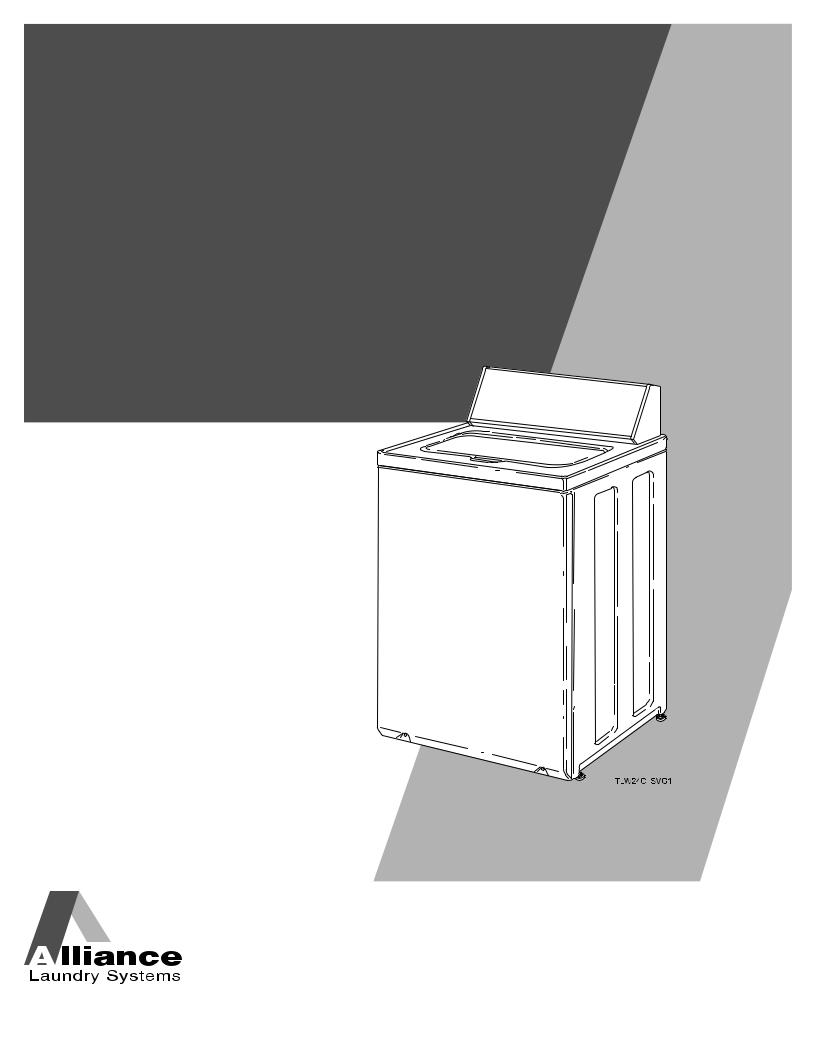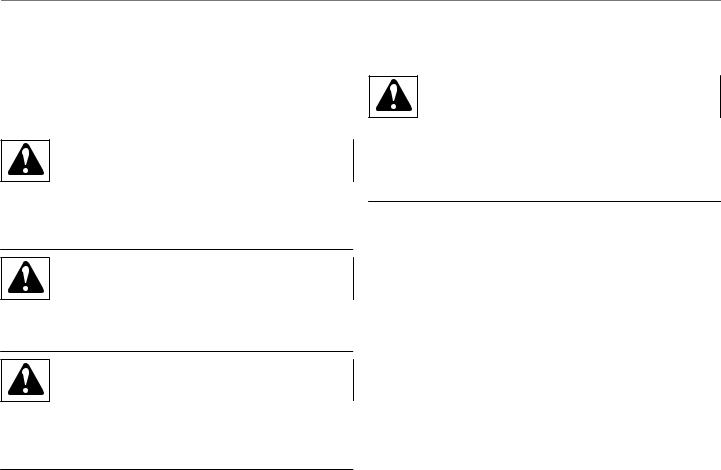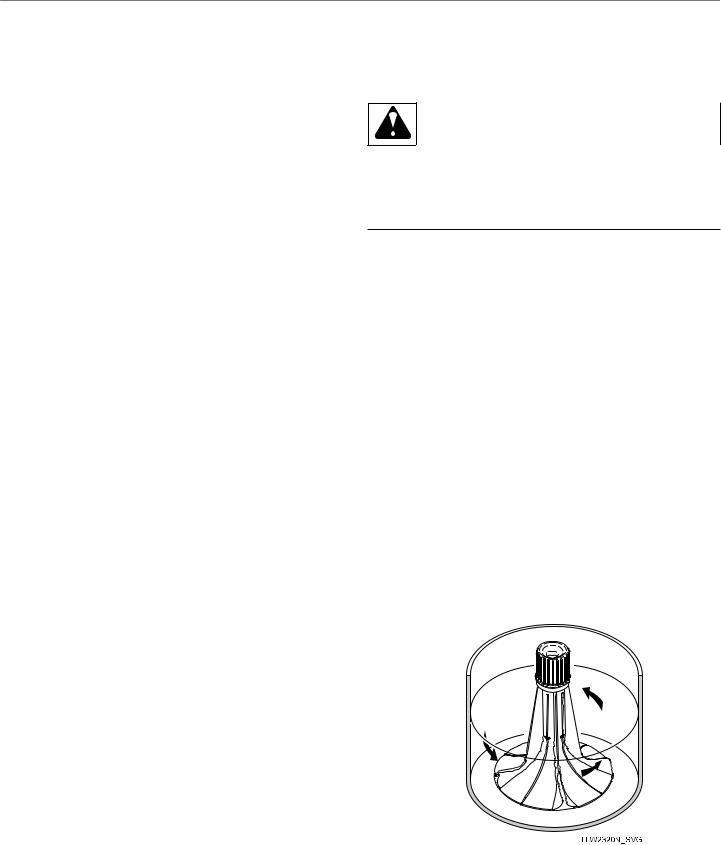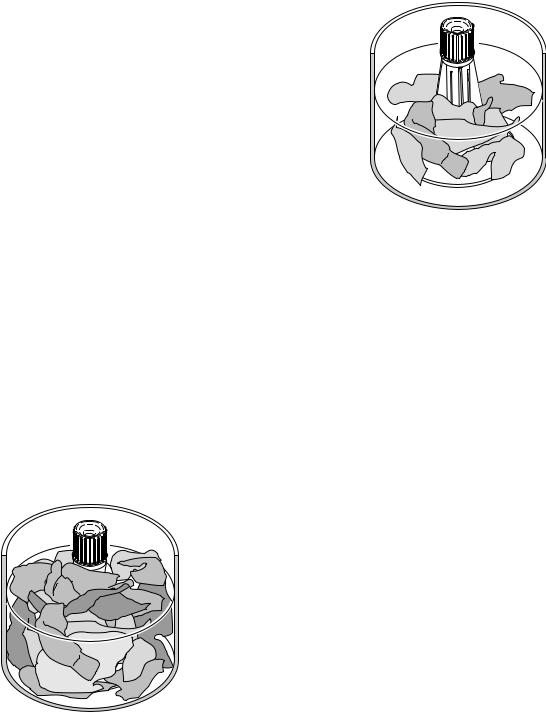Speed Queen TR7000WN Manual

User's Guide
for Topload Washers
Original Instructions
Keep These Instructions for Future Reference. CAUTION: Read the instructions before using the machine.
(If this machine changes ownership, this manual must accompany machine.)
www.speedqueen.com
Part No. 203967ENR2
September 2017

WARNING
Failure to install, maintain, and/or operate this machine according to the manufacturer's instructions may result in conditions which can produce bodily injury and/or property damage.
W030
WARNING
For your safety and to reduce the risk of fire or an explosion, do not store or use gasoline or other flammable vapors and liquids in the vicinity of this or any other appliance.
W022
NOTE: The WARNING and IMPORTANT instructions appearing in this manual are not meant to cover all possible conditions and situations that may occur. It must be understood that common sense, caution, and carefulness are factors which cannot be built into these washers. These factors MUST BE supplied by the person(s) installing, maintaining, or operating the unit.
Always contact the distributor, service agent, or the manufacturer about any problems or conditions you do not understand.
Read all instructions before using unit.
This product uses FreeRTOS V7.2.0 (www.freertos.org).
© Copyright, Alliance Laundry Systems LLC - |
3 |
Part No. 203967ENR2 |
DO NOT COPY or TRANSMIT |
|
|
Product Registration
Product Registration
New owners of Alliance Laundry Systems equipment are encouraged to register their appliance to insure proper limited warranty coverage. Register online at http://www.speed- queen.com/home/en-us/support/product-registration.aspx or contact your dealer to register your appliance. All information will be kept confidential and will not be distributed to other parties.
© Copyright, Alliance Laundry Systems LLC - |
4 |
Part No. 203967ENR2 |
DO NOT COPY or TRANSMIT |
|
|
Table of Contents |
|
Safety Information................................................................................... |
6 |
Explanation of Safety Messages..................................................................... |
6 |
Important Safety Instructions......................................................................... |
6 |
Operation................................................................................................ |
8 |
Before Washing............................................................................................. |
8 |
Loading the Washer....................................................................................... |
8 |
Control Panel........................................................................................ |
11 |
Digital Display.............................................................................................. |
11 |
Cycles......................................................................................................... |
11 |
Selections................................................................................................... |
13 |
Options....................................................................................................... |
13 |
Status......................................................................................................... |
14 |
To Wash Clothes.......................................................................................... |
14 |
Manual Soaking.......................................................................................... |
16 |
Cycle Operation..................................................................................... |
17 |
Common Washer Sounds............................................................................. |
21 |
Optional Features........................................................................................ |
22 |
Clothing Care........................................................................................ |
24 |
Clothing Concerns....................................................................................... |
24 |
Maintenance......................................................................................... |
26 |
Cold Weather Care....................................................................................... |
26 |
Care of Your Washer.................................................................................... |
26 |
Replacing Hoses.......................................................................................... |
26 |
Filter Screens.............................................................................................. |
26 |
Vacations and Extended Non-Use................................................................. |
26 |
Preventative Maintenance........................................................................... |
26 |
Reinstallation of Shipping Materials............................................................. |
27 |
Troubleshooting.................................................................................... |
28 |
Warranty Repairs......................................................................................... |
32 |
Contact Information..................................................................................... |
32 |
© Copyright 2017, Alliance Laundry Systems LLC
All rights reserved. No part of the contents of this book may be reproduced or transmitted in any form or by any means without the expressed written consent of the publisher.
© Copyright, Alliance Laundry Systems LLC - |
5 |
Part No. 203967ENR2 |
DO NOT COPY or TRANSMIT |
|
|

Safety Information
Safety Information
Explanation of Safety Messages |
Important Safety Instructions |
Precautionary statements (“DANGER,” “WARNING,” and “CAUTION”), followed by specific instructions, are found in this manual and on machine decals. These precautions are intended for the personal safety of the operator, user, servicer, and those maintaining the machine.
DANGER
Indicates an imminently hazardous situation that, if not avoided, will cause severe personal injury or death.
WARNING
Indicates a hazardous situation that, if not avoided, could cause severe personal injury or death.
CAUTION
Indicates a hazardous situation that, if not avoided, may cause minor or moderate personal injury or property damage.
Additional precautionary statements (“IMPORTANT” and “NOTE”) are followed by specific instructions.
IMPORTANT: The word “IMPORTANT” is used to inform the reader of specific procedures where minor machine damage will occur if the procedure is not followed.
NOTE: The word “NOTE” is used to communicate installation, operation, maintenance or servicing information that is important but not hazard related.
Save These Instructions
WARNING
To reduce the risk of fire, electric shock, serious injury or death to persons when using your washer, follow these basic precautions:
W023
•Read all instructions before using the washer.
•Install the washer according to the INSTALLATION INSTRUCTIONS. Refer to the EARTH/GROUND INSTRUCTIONS in the INSTALLATION manual for the proper earth/ground connection of the washer. All connections for water, drain, electrical power and earth/ground must comply with local codes and be made by licensed personnel when required. Do not do it yourself.
•Do not install or store the washer where it will be exposed to water and/or weather.
•Do not add the following substances or textiles containing traces of the following substances to the wash water: gasoline, kerosene, waxes, cooking oils, vegetable oils, machine oils, dry-cleaning solvents, flammable chemicals, thinners or other flammable or explosive substances. These substances give off vapors that could ignite, explode or cause the fabric to catch on fire by itself.
•Under certain conditions, hydrogen gas may be produced in a hot water system that has not been used for two weeks or more. HYDROGEN GAS IS EXPLOSIVE. If the hot water system has not been used for such a period, before using a washing machine or combination washer-dryer, turn on all hot water faucets and let the water flow from each for several minutes. This will release any accumulated hydrogen gas. THE GAS IS FLAMMABLE, DO NOT SMOKE OR USE AN OPEN FLAME DURING THIS TIME.
•To reduce the risk of an electric shock or fire, DO NOT use an extension cord or an adapter to connect the washer to the electrical power source.
•Do not allow children to play on or in the washer. Close supervision of children is necessary when the washer is used near children. This appliance is not intended for use by persons (including children) with reduced physical, sensory or mental capabilities, or lack of experience and knowledge, unless they have been given supervision or instruction concerning the use of the appliance by a person responsible for their safety. This is a safety rule for all appliances.
•Cleaning and user maintenance shall not be made by children without supervision.
© Copyright, Alliance Laundry Systems LLC - |
6 |
Part No. 203967ENR2 |
DO NOT COPY or TRANSMIT |
|
|
•Children less than three years should be kept away unless continuously supervised.
•Do not reach into the washer if the washtub or agitator, if applicable, is moving.
•Never operate the washer with any guards, panels and/or parts removed or broken. DO NOT tamper with the controls or bypass any safety devices.
•Use your washer only for its intended purpose, washing clothes. Always follow the fabric care instructions supplied by the garment manufacturer.
•Always read and follow manufacturer’s instructions on packages of laundry and cleaning aids. To reduce the risk of poisoning or chemical burns, keep them out of the reach of children at all times (preferably in a locked cabinet). Heed all warnings or precautions.
•Do not use fabric softeners or products to eliminate static unless recommended by the manufacturer of the fabric softener or product.
•Lid MUST BE CLOSED any time the washer is in operation. DO NOT bypass the lid switch or lid lock to permit the washer to operate with the lid open.
•Be sure water connections have a shut-off valve and that fill hose connections are tight. CLOSE the shut-off valves at the end of each wash day.
•Keep your washer in good condition. Bumping or dropping the washer can damage safety features. If this occurs, have your washer checked by a qualified service person.
•Do not repair or replace any part of the washer, or attempt any servicing unless specifically recommended in the usermaintenance instructions or in published user-repair instructions that you understand and have the skills to carry out. ALWAYS disconnect the washer from electrical supply before attempting any service.
•Disconnect the power cord by grasping the plug, not the cord. If the supply cord is damaged, it must be replaced by the manufacturer, its service agent or similarly qualified persons in order to avoid a hazard.
•Before the washer is removed from service or discarded, remove the lid or door to the washing compartment.
•Failure to install, maintain, and/or operate this washer according to the manufacturer’s instructions may result in conditions which can produce bodily injury and/or property damage.
NOTE: The WARNING and IMPORTANT SAFETY INSTRUCTIONS appearing in this manual are not meant to cover all possible conditions and situations that may occur. Observe and be aware of other labels and precautions that are located on the machine. They are intended to provide instruction for safe use of the machine. Common sense, caution and care must be exercised when installing, maintaining, or operating the washer.
Safety Information
Always contact your dealer, distributor, service agent or the manufacturer about any problems or conditions you do not understand.
© Copyright, Alliance Laundry Systems LLC - |
7 |
Part No. 203967ENR2 |
DO NOT COPY or TRANSMIT |
|
|

Operation
Operation
Before Washing
Prepare Wash Load
Empty Pockets and Cuffs
Make sure all pockets are empty and turn them inside out. One bobby pin, metal or plastic toy, nail or sharp object in a load can catch laundry, cause tears and plug the pump. Facial tissue left in a pocket will produce extreme “lint”. A crayon or lipstick in a wash load may cause stains that cannot be removed. Roll down cuffs and shake out grass, sand and gravel.
Strings on clothing such as hooded sweatshirts may get caught in or around the agitator. Remove the strings if possible or tie them together.
Mend Rips and Tears
Little holes can become bigger in the washer. Mend holes and tears before placing garments in the washer.
Close Zipper and Fasten Hooks
These can catch on garments in a wash load and tear them. Tie belts and sashes so they won’t wind around clothes.
Pretreat
Pretreat shirt collars and cuffs with a pretreat product or liquid detergent when placing them in the washer. Before washing, treat special stains individually.
WARNING
Do not wash or dry items soiled with vegetable or cooking oils. Some oils may remain after washing and may cause the fabric to catch on fire by itself.
W527
Loading the Washer
Load Articles
NOTE: Always add detergent first.
•Load larger and heavier items first so they are at the bottom of the washtub.
•Load items by the amount of space they take up, not by their weight.
Check For Colorfastness
Squeeze a portion of garment in warm or hot sudsy water. If the color bleeds or runs, wash the item separately in cold water.
Sort Items
Different items use different wash cycles and temperatures. Always follow the manufacturer’s care label. Proper sorting is easy if you follow a few guidelines:
1.Sort by Color: Separate items into loads of whites, darks, lights and non-colorfast.
2.Sort by Fabric and Construction: Separate items into loads of cottons/linens, permanent press, synthetics/blends/ poly knits, and delicates.
3.Sort by Temperature: Separate items into loads that can be washed in cold, warm or hot water.
4.Sort by Type and Amount of Soil: Heavily soiled clothes will need extra treatment. Lightly soiled clothes can become dingy if washed with heavily soiled items.
5.Sort Lint “Shedders” From Lint “Receivers”: Some fabrics attract lint and should not be washed with lint-shedding loads. Lint shedders are cottons, terry towels, chenille bedspreads, rugs and clothes that have been heavily bleached. Lint receivers are synthetics, permanent or durable press, knits (including socks), corduroy, and other smooth fabrics.
•Mix large and small items in a load to get the best washing results. For example, don't wash a single large item such as a throw rug. Add several smaller items to avoid an out-of- balance condition.
•An out-of-balance load may limit spin speeds.
•The left decimal point on the display may blink on/off at the end of a cycle if the load did not reach maximum speed. This can indicate an unbalanced load.
•Drop items loosely into the washtub. The bulk of the clothes rather than the weight will determine load size. Do not pack items in or wrap them around the agitator. Overloading can cause poor cleaning, excessive wrinkling and tears.
© Copyright, Alliance Laundry Systems LLC - |
8 |
Part No. 203967ENR2 |
DO NOT COPY or TRANSMIT |
|
|

•Items should move freely through the wash water for best cleaning results.
•When washing very large items, do not fill washtub as full as with other loads.
Load Size - Auto Fill Water Levels
•This washer has an Auto Fill feature. It will automatically select the proper water level for the load size and type of fabric that is being washed. Auto Fill is recommended for the best wash performance in all cycles.
•Auto Fill works in multiple stages. During the first fill step of the cycle, water will fill to the minimum level programmed for the specific cycle selected. Once the wash step begins, the control starts sensing the load. Once sensing is complete more water may be added to optimize wash results.
•If you pause the cycle after it started, the Auto Fill sensing stage will begin again once the cycle is resumed. It will determine if any items have been added and if more water is needed.
•Overloading the washtub can result in poor washing and rinsing.
Load Size - Manual Water Levels
•Although the Auto Fill selection is recommended for the best wash performance in all cycles, there are three manual load size selections as well.
•The water level in your washer should fit the size of your wash load. Small loads will use lower water levels. There must be enough water in the washtub to allow items to move and turn over freely.
WRONG Water Level for Size of Load
Operation
CORRECT Water Level for Size of Load
TLW2319N_SVG
•Overloading the washtub can result in poor washing and rinsing.
IMPORTANT: If in doubt when using a manual selection, always use a larger load size. Most average loads will require the Large Load Size setting. Failure to have the correct volume of water relative to the load may decrease washer performance.
|
Manual Load Sizes |
|
|
|
|
Small |
|
1-2 permanent press dress |
|
|
shirts or 2 pillow cases or 1 |
|
|
lightweight dress or similar |
|
|
size load |
|
|
|
Medium |
|
6-7 permanent press shirts |
|
|
or 2 twin sheets, 2 pillow ca- |
|
|
ses or 8 standard bath tow- |
|
|
els, 6 wash cloths |
|
|
|
Large |
|
8-9 shirts, 5 pair polyester |
|
|
pants or 2 queen size sheets, |
|
|
4 pillow cases, 2 nightgowns, |
|
|
1 pair men’s pajamas or 1 |
|
|
queen size bedspread |
|
|
|
The manual load size water levels will vary depending on the wash cycle selected. If the wrong load size is selected, the machine may add more water.
W282I_SVG
© Copyright, Alliance Laundry Systems LLC - |
9 |
Part No. 203967ENR2 |
DO NOT COPY or TRANSMIT |
|
|
Operation
Wash Temperature
Hot
Hot water is the most effective for cleaning, but it is not recommended for all fabric types (read labels).
Warm
The Warm Wash is useful for providing a thorough cleaning on light and moderately soiled clothing without damaging fabric or adding to color fading. Warm water also reduces wrinkling. Warm water can also be used in the rinse water. Use with noncolorfast or dark colors, permanent press, silks, woolens, nylon, and acrylic.
Cold
The Cold Wash is ideal for delicate items. Although its cleaning abilities are not as great as with hot or warm water, it is useful for colors that bleed easily and for sensitive fabrics.
The Warm/Warm temperature selection will use warm rinse water. All other rinses use cold water. It is the most beneficial for fabrics. Cold rinses reduce wrinkling and color fading. In addition, cold rinses will save money and energy.
NOTE: In wash temperatures colder than 60°F [16°C], detergents do not dissolve well. This may cause ineffective cleaning, or lint and residue to form.
NOTE: Always follow manufacturer’s care labels.
Water Supply Temperature
Water temperature is determined by the temperature of the incoming water supply. The washer does not heat or cool the water.
For example, northern climates will have much colder incoming water during the winter months. Southern climates will have much warmer cold water during the summer months.
Wash Temperature Guide
Water |
|
|
|
|
Temperature |
|
Use |
|
Comments |
|
|
|
|
|
HOT |
• |
Sturdy whites |
• |
Best cleaning |
|
|
and colorfast |
|
for items soiled |
|
|
items |
|
with oily or |
|
• |
Work clothes |
|
greasy stains, |
|
• |
Soiled items |
|
grass, or ink. |
|
• |
Diapers |
|
|
|
|
|
|
|
WARM |
• |
Light and mod- |
• |
Rinsing of |
|
|
erately soiled |
|
some items |
|
|
items |
• |
Reduces wrin- |
|
• |
Non-colorfast |
|
kling in perma- |
|
|
or dark colors |
|
nent press fab- |
|
• |
Permanent |
|
rics |
|
|
press |
• |
Less fading |
|
• |
Silks, woolens, |
• |
Reduces |
|
|
nylon, acrylic |
|
shrinking in |
|
|
|
|
knits |
|
|
|
|
|
COLD |
• |
Non-colorfast |
• |
Saves energy |
|
|
fabrics |
• |
Reduces color |
|
• |
Extra delicate |
|
fading |
|
|
clothing |
• |
Reduces wrin- |
|
|
|
|
kling |
|
|
|
• |
Reduces |
|
|
|
|
shrinking |
|
|
|
|
|
|
|
Table 1 |
|
|
Energy
You can save energy when washing by following a few guidelines:
1.Heating water accounts for the greatest energy expense when washing. Save on heating water by using warm or cold washes.
2.Wash full loads, but do not overload.
3.Use Soak option for heavily soiled items to reduce the need for higher soil level selections.
© Copyright, Alliance Laundry Systems LLC - |
10 |
Part No. 203967ENR2 |
DO NOT COPY or TRANSMIT |
|
|
